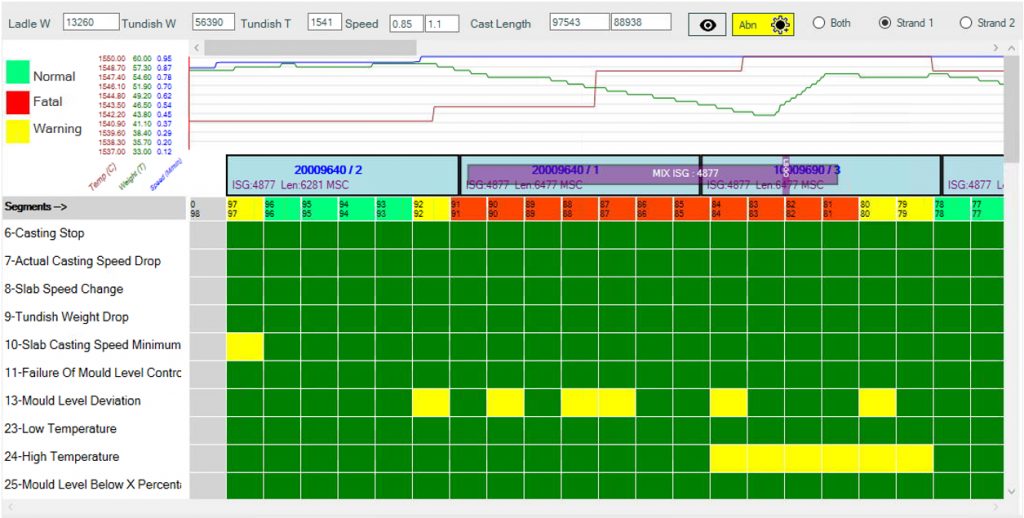Irisa Continuous Casting System
Level 2 of Continuous Casting Machine
Information Systems
Irisa Smart Organization
Irisa ccs level 2 of Continuous Casting Machine
The purpose of the casting unit is to convert molten steel into bars, depending on the type of casting machine, different products such as slabs, blooms or billets are produced. In order to achieve the best quality and reduce waste, the casting level 2 system applies controls to the machine, such as strand programming, controlling of cutting machine, marking, cooling loops, determining the quality of the bars and suggesting the casting speed. Speed changes must be accurate and based on instructions or values set by automation systems to prevent accidents such as bar breakouts. After the melt has left the mold, it has a shell, and from then, bar shell is cooled by the water on which it is sprayed. The bar enters the cutting area after leaving the cooling area and is cut. The cut ingot is transferred to the marking machine. The control of the casting process has many complexities, which in the automatic mode, control and tracking of most parts of the machine is the responsibility of the level two system.
This model processes the performance of all parts of the casting machine and coordinates the production of its products based on the needs which sent from higher levels of automation. In this part, by adjusting the speed and having the information of the ladle sent from other units, the interruption of the casting sequence is prevented. It also plans the casting line according to the dimensions of the mold and the weight of the and tandish. This model sends the information to the cutting and marking machines. This model detects and corrects the error due to the error correction algorithms of the total length of the cast due to the slipping of the measuring rollers. Therefore, correct information is always provided for other models.
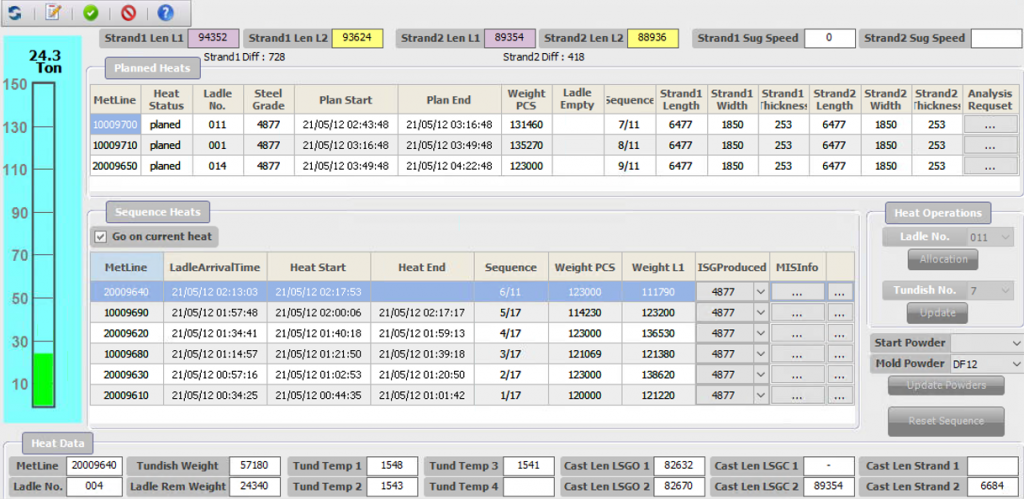
This model is responsible for cooling the ingot along the line and is one of the most important models of the system. The cooling zone is divided into a number of sections, each section must absorb some of the thermal energy from the ingot and reduce the ingot temperature after leaving that cooling area. This decrease in temperature should be gradual and continuous to prevent cracking on the surface and inside the ingot. The cooling methods that are used today are static method and dynamic method.
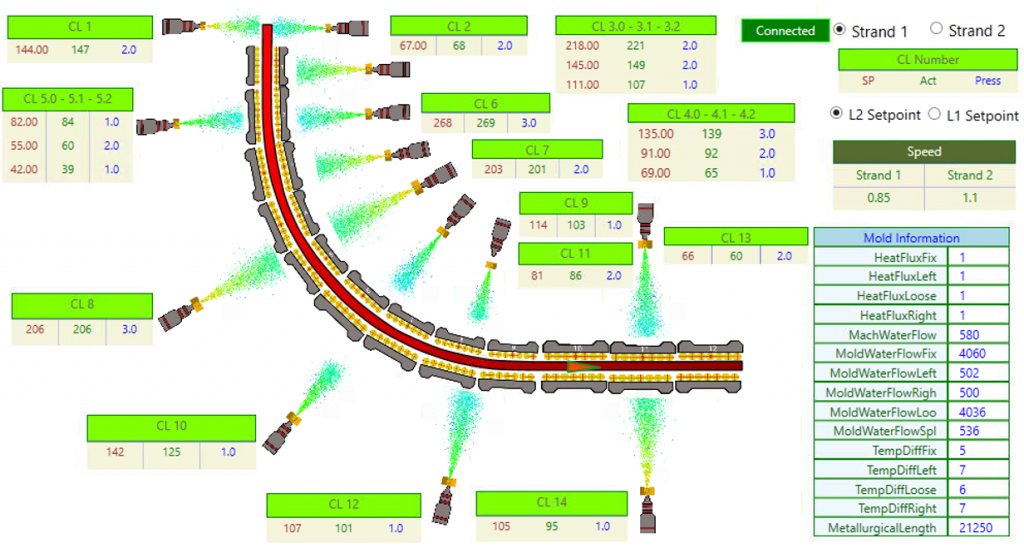
The level 2 automation system follows and reacts to the changes that occur in mold by considering virtual boundaries. These changes can be caused by injecting oxygen into the nozzle to remove the clogging, fly tundish or by mixing two different alloys in the tundish. In this case, the system detects the start and end of the part of the ingot that has this property and stores it in its database. Since this part of the product may be scrap, it should not be in the middle of a healthy slab because the whole slab may become scrap. Therefore, this model tries to recalculate the plan length and change the product length (increase or decrease) within the standard range that defined in the system, by solving algorithms in which the new alloy start boundary and the last slab end boundary reach to gather. This method helps to plan a pure product made of an alloy without scrap.
Immediately after taking temperature from tundish, the superheat temperature is determined then the metallurgical speed of strand is calculated and operator is notified.
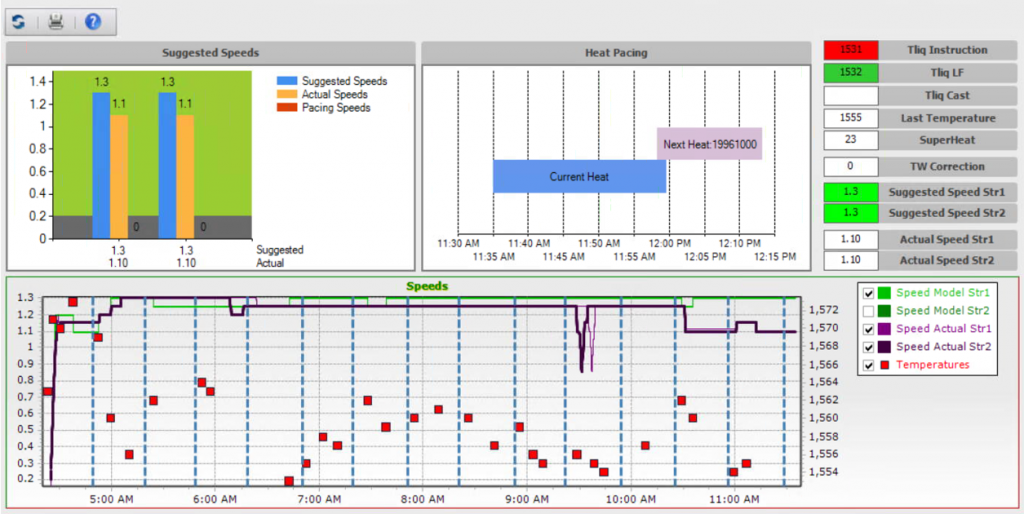
By opening the new ladle, the new and previous heats may not be the same in terms of alloy, and a mixed zone (new alloy) produced in tundish. The weight of the new alloy is directly related to the melting weight within the tundish and mold dimension. This model identifies the combination of two types of alloys (steel grade) and also the beginning and end of the slab that has this specification.
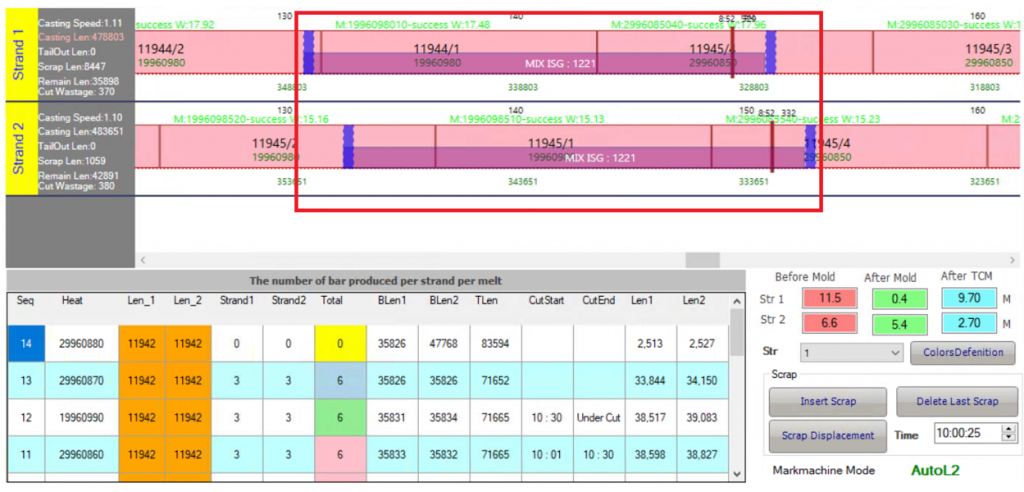
This model divides the entire strand into virtual segments and stores all inputs and information for that segment from the time it is generated in the mold until it is cut. For example, if the water flow in an area decreased for a period of time, it will mark the segments adjacent to that cooling area, then stores the cause and consider it as an abnormal condition. Each abnormal condition has its own weight. After bars cut this model evaluate the bars quality according to all abnormalities in the bar
